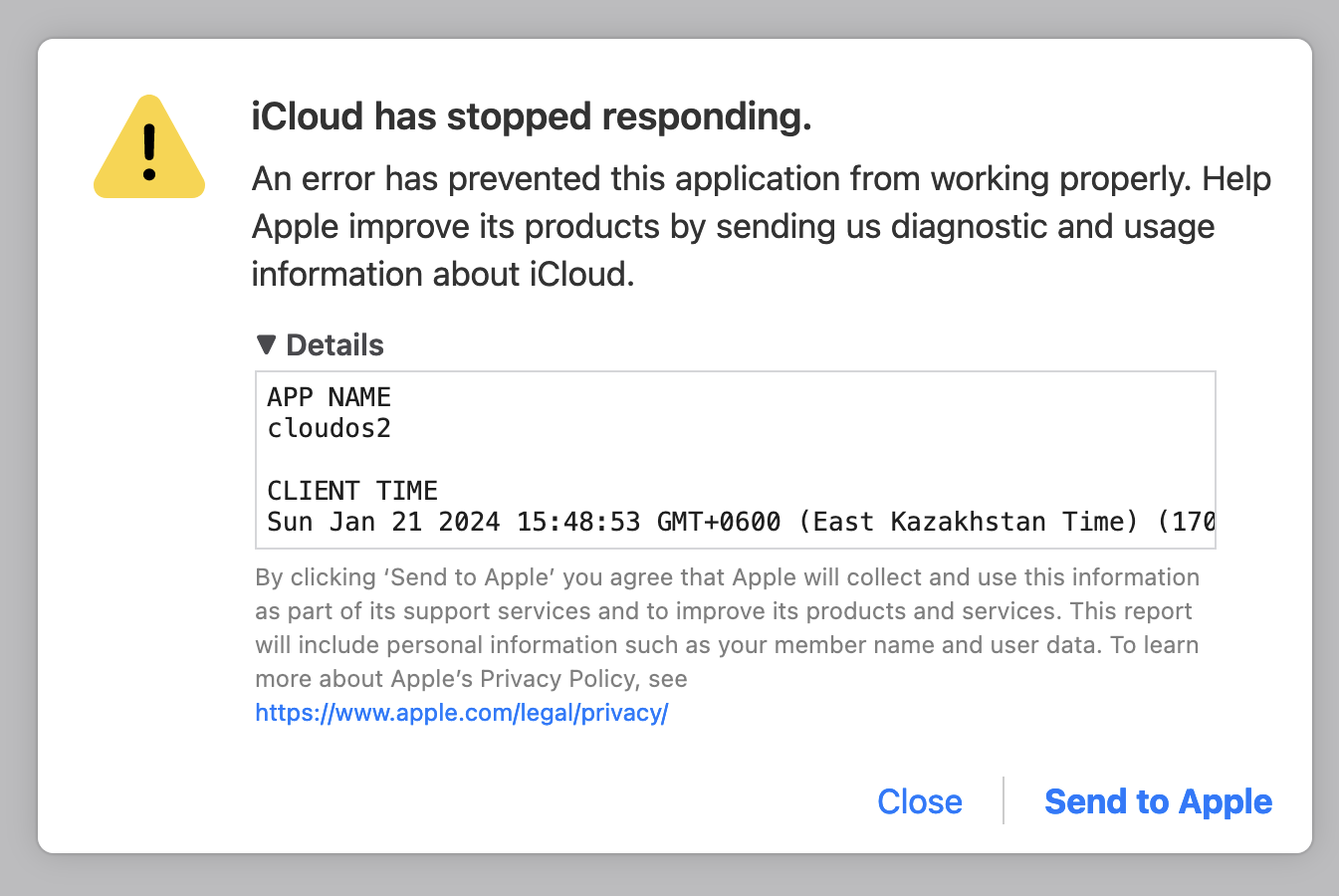From Self-Hosted FOSS to Proprietary PaaS: A Migration Story
First time to blog in three years!
As a person too busy with ${DAYJOB} the last few years, I wanted my
remaining servers hosting groupware, file sharing, and news reading
software to ideally manage themselves. 12 EUR/mo doesn’t mean you get a
system administrator to do chores for you, instead you get to do the
routines yourself. That could only continue for as much before we would
get fed up and attempt the move back to being truly serverless™, which
is what the post you’re reading is all about.
No servers for us would mean:
- getting a smaller monthly bill thankfully to most personal cloud options costing less than a six EUR/mo VPS
- doing nothing whenever another Debian / Red Hat /
$DISTRONAMESecurity Advisory reports of a critical vulnerability - having nothing to maintain or update (which is a serious win,
considering
${DAYJOB}involves enough system maintenance by itself)
Planning the move
Our self-hosted service inventory to migrate contains the following:
- Gitea, a Git repository hosting in Go
- Nextcloud, a groupware suite backend server that works as a private cloud, in PHP
- Tiny Tiny RSS, an RSS feed reader and aggregator in PHP
- Satellite, a Gemini server that only serves static content, in Go
- (if you count this one as a service, that is) nginx, a web server
hosting https://tdem.in, aka the website you’re reading
this at, that also needs to serve a few occasional redirects, like
music.tdem.into the Last.fm page
The hardest challenge to solve with migrating off these three would be
keeping exactly zero servers at hand. This would mean finding some other
way to handle HTTP redirects from domains previously served at
git.tdem.in, storage.tdem.in, and others, which a simple CNAME
record doesn’t handle. Gladly for us, Cloudflare provides redirects as a
feature of its web edge for free (if you’re fine with only having up to
10 of those), and the sole requirements to use them is to have
Cloudflare handle DNS for your domain (which was already the case for
tdem.in, and proved useful).
Finding a replacement to git.tdem.in was easy: GitHub was long the
home to most of our public code. TTRSS would have to go in favor of
something that runs locally, like NetNewsWire. Nextcloud
has a pretty obvious alternative for Apple users.
As long as we were fine with stopping hosting the Gemini capsule (which was bound to happen at some point due to reducing interest and lack of energy to maintain gmnhg) and agreeing to the status quo of this website being our only home page, Satellite needed no replacement.
Therefore, our final listing of free or cheaper services to use for syncing consists of the following:
- iCloud to handle files / calendar / contacts / tasks syncing / other groupware (only really works for Mac/iPhone users, but we’re rocking both anyway, so why not)
- GitHub to host our ever-shrinking set of public projects
- GitHub Pages to host this website
- NetNewsWire to read RSS feeds locally and sync subscriptions with the built-in iCloud support
- none for Gemini hosting, which was bound to be gone at some point anyway due to lack of energy to maintain gmnhg
- Cloudflare to handle redirects
Cloudflare as the ultimate redirector
Performing redirects from a hostname to elsewhere is doable with Cloudflare in two simple steps:
- Creating a CNAME record pointing anywhere (we use
@as the target to prevent any unwanted side effects). The important bit is that the “Proxied by Cloudflare” toggle needs to be ON, so the traffic reaches the Cloudflare edge.
What actually ends up on public DNS looks like this:
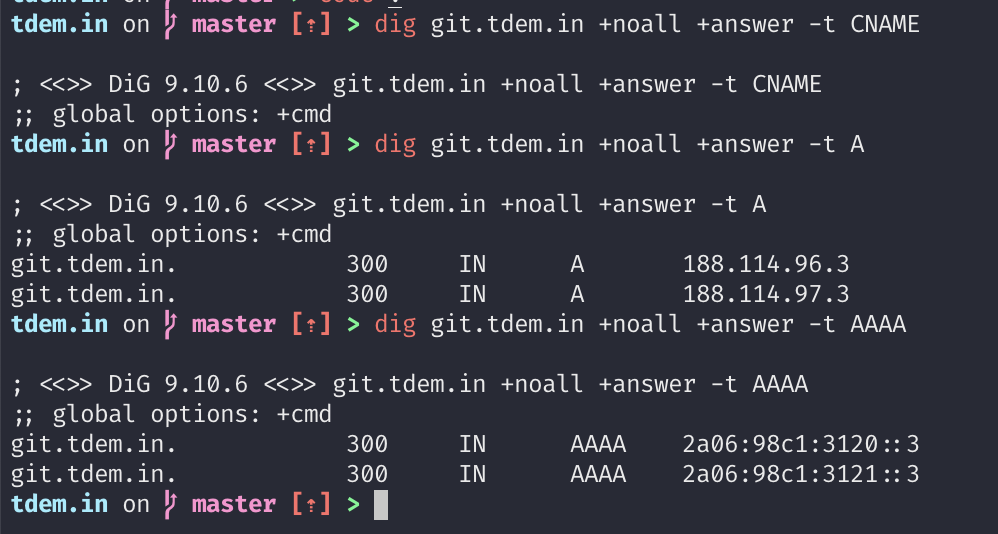 CNAME records, transformed by Cloudflare into A records onto its edge
CNAME records, transformed by Cloudflare into A records onto its edge
- Creating a dynamic redirection rule that responds with 302 whenever traffic matching your hostname reaches Cloudflare:
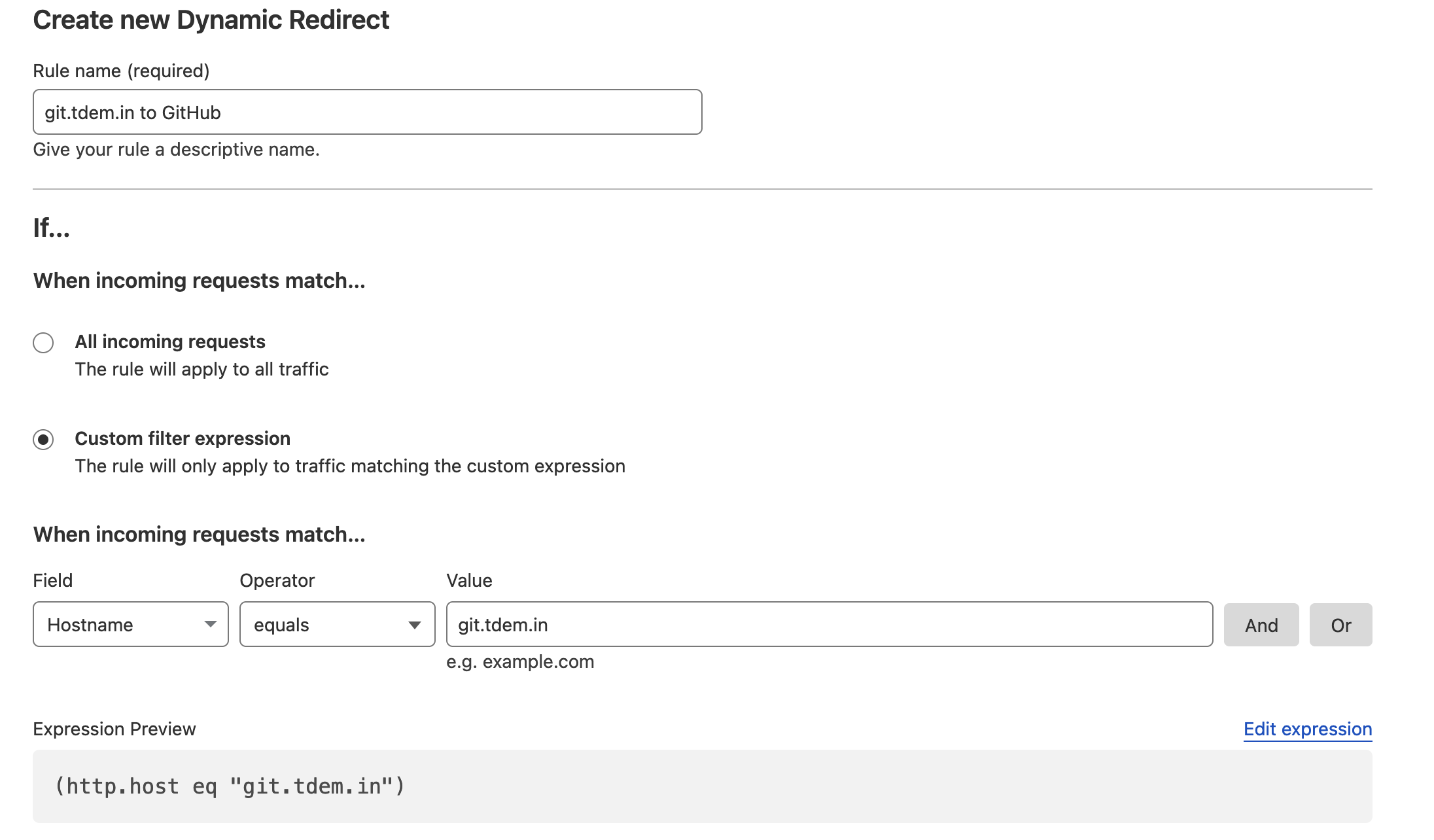 Cloudflare dynamic redirection rule matcher
Cloudflare dynamic redirection rule matcher
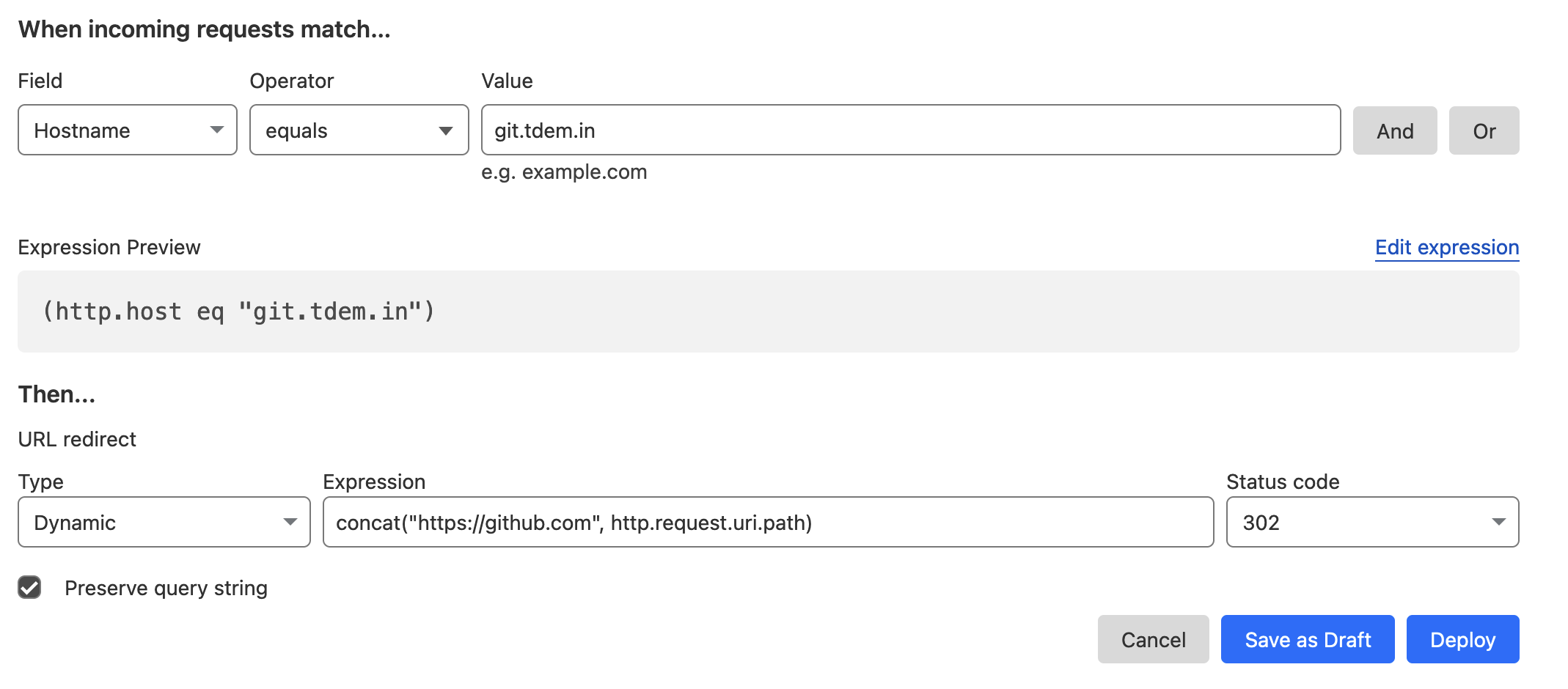 Cloudflare rule target, responding with a 302
Cloudflare rule target, responding with a 302
The end result is that our traffic ends up where destined:
 Cloudflare redirects git.tdem.in to GitHub, as advertised
Cloudflare redirects git.tdem.in to GitHub, as advertised
Gitea
Relatively easy to migrate, as long as most of the repos are private,
feature no CI/CD, no content to migrate besides code, etc. The list of
repos is trivially obtainable through <profile> -> Admin Panel -> Content -> Repositories.
This small snippet automates most of the routine, except creating the repository at GitHub:
git_mirror () {
git clone --mirror "https://git.tdem.in/${1}.git" $1
cd $1
git remote add github "https://github.com/${1}.git"
git push -u github --all
git push github --tags
cd -
}
Invoking it, as repositories at GitHub get created and reconfigured to be private and contain no wiki / Actions / etc, is as easy as:
git_mirror tdemin/repository1
git_mirror tdemin/repository2
Memo: Gitea uses the same wiki Markdown hosting scheme as GitHub, with
${REPOSITORY_NAME}.wiki.gitbeing the URL for the Git repository containing all of your pages. Migrating that would simply mean an extragit_mirror.
The last bit remaining would redirecting everyone1 hitting
git.tdem.in from history or links on the public web, which is
configurable with Cloudflare as shown above.
Nextcloud
The amount of time spent on migrating from a groupware software piece to
another directly depends on the volumes of information stored inside the
former. The scenario for storage.tdem.in included the following, for
one user:
- calendar events
- reminders (technically fancy calendar events)
- contacts
- files
Files are taken care of by copying them to the iCloud drive folder. To
make syncing ~/Desktop and ~/Documents seamless like Nextcloud
offers OOB2 you might want to enable the Desktop & Documents folders in iCloud sync settings. As an added bonus,
you get file URL sharing directly from Finder.
Calendar events are trivially moved to the relevant calendar in two clicks per event. While sounding like a tedious job, that’s doable in a few minutes even for the largest agendas thanks to the built-in snappy macOS app. Reminders get moved into iCloud-hosted lists with the help of mass drag-and-drop (unless you care about lots of historically completed entries. I do not).
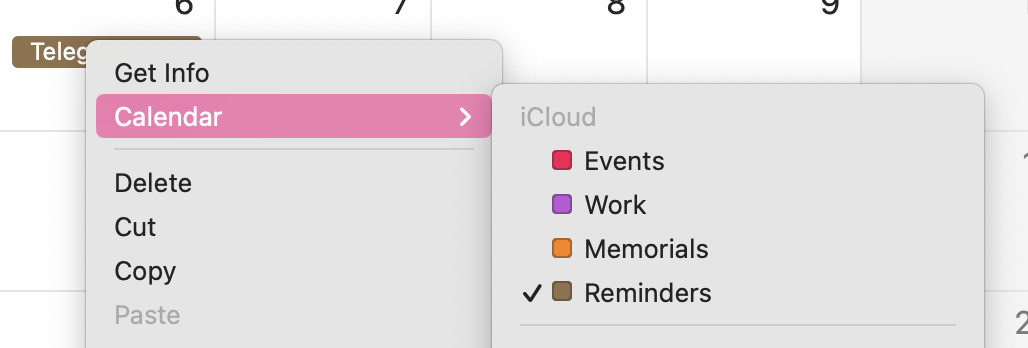 As easy as it gets with the right app for the job
As easy as it gets with the right app for the job
There’s an option to extract your calendar entries through CalDAV and then import it using https://caldav.icloud.com, but I didn’t care enough to do that. The events in my calendar were trivial enough to click through to move to iCloud-provided calendars. The Apple’s calendar app is friction-free enough.
Contacts proved to be a simple task for a mass vCard export/import. A few records needed fixing after the import, but that’s a five to ten minute-job even for a contact book of hundreds of entries.
Tiny Tiny RSS
There’s no real data export option other than using OPML, but that one just gets imported into your client of choice, and you’re done. I recommend NetNewsWire as a brilliant macOS / iOS implementation that can also sync feeds across devices with iCloud, but the choice is ultimately up to you.
You might still want to keep the dump of your TTRSS database for archival purposes.
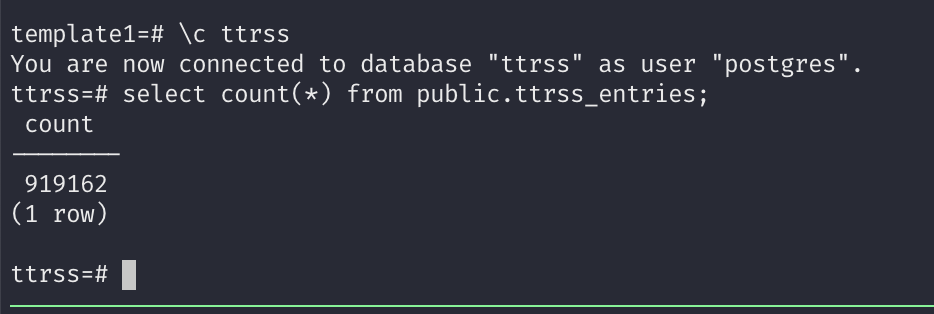 That’s… quite a number of entries to get rid of. :(
That’s… quite a number of entries to get rid of. :(
GitHub Pages
Migrating an existing Hugo blog with a well-defined CI setup mostly
concludes to following the instructions for setting up GitHub
Pages and then doing the routine
to get it work with a custom domain. My sole nitpick was that GitHub
Pages can be served from any domain, not just <username>.github.io,
which helped with keeping the repository in its canonical
place.
In the end, the whole chore concluded to the following GitHub Actions workflow diff:
- - name: Build Gemini site with gmnhg
- uses: docker://ghcr.io/tdemin/gmnhg:v0.4.2
+ - name: Deploy to GitHub Pages branch
+ uses: peaceiris/actions-gh-pages@373f7f263a76c20808c831209c920827a82a2847
with:
- args: gmnhg -output ./gmnhg
- - name: Deploy web site
- # v6.0.0, strict commit pinning due to handling secrets
- uses: Burnett01/rsync-deployments@45d84ad5f6c174f3e0ffc50e9060a9666d09c16e
- with:
- switches: -avzr --delete
- path: hugo/
- remote_path: ${{ secrets.DEPLOY_ROOT_PATH }}/blog.tdem.in
- remote_host: ${{ secrets.DEPLOY_HOST }}
- remote_user: ${{ secrets.DEPLOY_USER }}
- remote_key: ${{ secrets.DEPLOY_KEY }}
- - name: Deploy Gemini site
- # GitHub Actions doesn't allow anchors in workflow YAML, so
- # duplicating this is required
- uses: Burnett01/rsync-deployments@45d84ad5f6c174f3e0ffc50e9060a9666d09c16e
- with:
- switches: -avzr --delete
- path: gmnhg/
- remote_path: ${{ secrets.DEPLOY_ROOT_PATH }}/gemini
- remote_host: ${{ secrets.DEPLOY_HOST }}
- remote_user: ${{ secrets.DEPLOY_USER }}
- remote_key: ${{ secrets.DEPLOY_KEY }}
+ github_token: ${{ secrets.GITHUB_TOKEN }}
+ publish_dir: ./hugo
+ cname: tdem.in
Setting up redirects for both www.tdem.in and blog.tdem.in as
outlined in the Cloudflare chapter above helps for the remainders of
blog.tdem.in on search engine databases.
As
tdemin.github.iois now served from this repository, this required importing content we might have had in there. Gladly, this only meant copying a single blog post for the archive.
Conclusions
Whether or not we won or lost more by migrating depends on the priorities. Pros are as follows:
- less costly monthly bill (60% of the original costs after one adds the VPN server costs, that of two 6 EUR/mo VPS instances)
- virtually no maintenance required
- better groupware OS integration for Apple devices, where syncing reminders whenever they change/get added just works™ and doesn’t get stuck from time to time which is what occasionally happened on both latest iOS 17 and macOS 14 with Nextcloud CalDAV entries installed with a configuration profile
What we lost:
- the ability to have a background always-on RSS updater that would ensure we lose no entries in-between connections (which is important for high-volume collective blogs and news outlets)
- freedom in picking groupware client software, which never really existed on Apple hardware anyway
I stand by the option that was a net positive.
-
This means pages like links to commits, issues, etc, are likely to break, since GitHub might not necessarily do the URI scheme Gitea’s web UI does. This also includes Google Search, as Gitea’s workarounds to get non-canonical pages (random commit pages in random languages, etc) out of search engine indexes are imperfect to this day. YMMV. ↩︎
-
Out-of-the-box ↩︎

